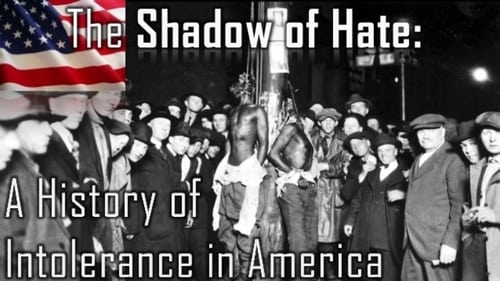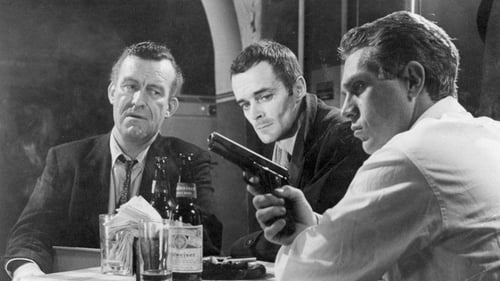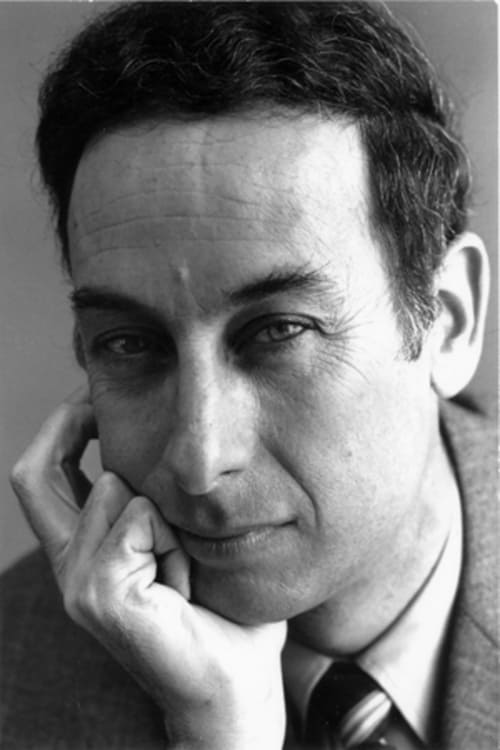Charles Guggenheim
출생 : 1924-03-31, Cincinnati, Ohio, USA
사망 : 2002-10-09
약력
Charles Eli Guggenheim was an American film director and producer. His first job was working for Lew Cohen at CBS, where he was exposed to the new media of film and storytelling.

Director
During the Battle of the Bulge in the winter of 1944, thousands of American GIs were captured by German forces. Berga: Soldiers of Another War, the final work in the distinguished career of four-time Academy Award-winning documentary filmmaker Charles Guggenheim, is the untold story of 350 American POWs caught in the tragedy of the Holocaust. In blatant violation of the Geneva Convention, the Jewish American soldiers in the 106th Infantry Division, together with those who had "Jewish-sounding" names or who "looked" Jewish, were shipped off to the slave-labor camp at Berga am Elster, a satellite camp of the infamous Buchenwald.

Narrator
During the Battle of the Bulge in the winter of 1944, thousands of American GIs were captured by German forces. Berga: Soldiers of Another War, the final work in the distinguished career of four-time Academy Award-winning documentary filmmaker Charles Guggenheim, is the untold story of 350 American POWs caught in the tragedy of the Holocaust. In blatant violation of the Geneva Convention, the Jewish American soldiers in the 106th Infantry Division, together with those who had "Jewish-sounding" names or who "looked" Jewish, were shipped off to the slave-labor camp at Berga am Elster, a satellite camp of the infamous Buchenwald.

Derrick's father
캠퍼스를 배경으로 세 명의 신문학과 학생들이 실제 뉴스와 루머 사이의 차이점을 규명하는 숙제를 하면서 벌어지는 내용의 청춘물.

Director
"A Place in the Land" is the story of George Perkins Marsh, Frederick Billings and Laurance S. Rockefeller, three seminal figures in the history of the conservation movement in America. Though they were born generations apart and lived very different lives, the three were connected by a common vision and a common place. Marsh, Billings and Rockefeller occupied the same home and surrounding land in Woodstock, Vermont-a place that instilled in each of them a determination to preserve America's natural resources and to teach their fellow man to live in harmony with nature. Today, their legacy and the land in Woodstock that inspired them are preserved at the Billings Farm & Museum, a museum of Vermont's rural past and a working dairy farm, and the Marsh-Billings-Rockefeller National Historical Park-the first National Park in America dedicated to teaching the concept of land stewardship.

Writer
The film expresses the history of oppression, discrimination, violence and hate in America. It was nominated for an Academy Award for Best Documentary Short.

Director
The film expresses the history of oppression, discrimination, violence and hate in America. It was nominated for an Academy Award for Best Documentary Short.

Writer
An award-winning documentary of the invasion of Normandy in World War II, using rare archival films and pictures from British, American, and German archives. The narrator provides the overall continuity, but the voices of over 50 participants who were involved in the staging of the invasion in Britain or were on the beaches of France bring the images to life.

Director
An award-winning documentary of the invasion of Normandy in World War II, using rare archival films and pictures from British, American, and German archives. The narrator provides the overall continuity, but the voices of over 50 participants who were involved in the staging of the invasion in Britain or were on the beaches of France bring the images to life.

Director
A short history of civil rights movements in the US. Winner of the Oscar for Best Documentary, Short Subject

Writer
Exploding dam kills thousands in massive flood catastrophe in Pennsylvania in 1889.

Director
The story of Ellis Island and the American immigration experience. This film is a tribute to the 18 million men, women and children who made the torturous journey from the Old to the New World between 1890 and 1920, in the single largest migration in human history. The film radically tells the immigrants' stories as they braved the unknown, from the time they left their homelands, their journey across the ocean, to the moment the doors of Ellis Island opened, revealing the great promise of America.

Director
On May 30, 1889 the South Fork Dam, which maintained a pleasure lake for wealthy Pittsburgh industrialists and their families, failed due to very heavy rains and poor maintenance by the dam's owners. The burst dam sent a wall of water and debris, 40 feet high and half a mile wide, 14 miles downstream to the bustling industrial city of Johnstown, Pennsylvania. More than 2000 people lost their lives in the disaster. This documentary tells the story, and tells us that the disaster was easily avoidable.

Director
High Schools is a 1984 American documentary film produced and directed by Charles Guggenheim. It is based on Ernest L. Boyer's book, High School, and was filmed on location in seven American high schools. The film was nominated for an Academy Award for Best Documentary Feature.

Director
A documentary about the design/construction of the National Gallery of Art's East Building in Washington, D.C.

Director
This film highlights the East Building's architectural conception and construction, beginning with the challenge initially faced by architect I. M. Pei. Documentation of construction includes footage of the works of art commissioned for the building.

Director
This moving film tribute to a man who had hoped to win the presidency created a historic moment when it brought the Chicago Democratic National Convention to a standstill and the crowd, in tears, to its feet. Commissioned by the Kennedy family, the film begins with the funeral train to Washington, D.C. and follows the triumphs and tragedies in the late Senator's life with extraordinary newsreel footage, archival stills, and home movies. The film was produced in only four weeks, two months after the Senator's assassination, in order to meet the Convention deadline. Guggenheim Productions, with the country's resources at its fingertips, worked around the clock to complete this film honoring RFK's life and the Democratic Party. "Robert Kennedy Remembered" is a poignant film biography that evokes the spirit, quality and commitment Robert Kennedy brought to his life and work. This film went on to win Academy Award® for Best Documentary Short in 1968.

Camera Operator
Soaring above the banks of the Mississippi River in St. Louis, Missouri, the Jefferson National Expansion Memorial Arch stands today as the nation's tallest arch and national monument. "Monument to the Dream", at unnerving heights, traces the adventures of the Arch's evolution, from the early concepts on the drawing board to the fabrication of its stainless steel sections, and the triumphant placement, in a race against the sun, of its final section in the fall of 1965. Through the words of the master architect Eero Saarinen, and the ambient chorus of mallets beating metal sheets into graceful curves, the film reveals the innovative structural techniques and the brilliant design of this avant-garde monument, presenting one of this century's greatest civil engineering achievements as a metaphor for the struggle to win the West. This film went on to be nominated for an Academy Award® for Best Documentary Short in 1967.

Director
Soaring above the banks of the Mississippi River in St. Louis, Missouri, the Jefferson National Expansion Memorial Arch stands today as the nation's tallest arch and national monument. "Monument to the Dream", at unnerving heights, traces the adventures of the Arch's evolution, from the early concepts on the drawing board to the fabrication of its stainless steel sections, and the triumphant placement, in a race against the sun, of its final section in the fall of 1965. Through the words of the master architect Eero Saarinen, and the ambient chorus of mallets beating metal sheets into graceful curves, the film reveals the innovative structural techniques and the brilliant design of this avant-garde monument, presenting one of this century's greatest civil engineering achievements as a metaphor for the struggle to win the West. This film went on to be nominated for an Academy Award® for Best Documentary Short in 1967.

Writer
Children Without is a 1964 American short documentary film directed by Charles Guggenheim, about a young girl and her brother growing up in the housing projects of Detroit. It was nominated for an Academy Award for Best Documentary Short.

Director
Children Without is a 1964 American short documentary film directed by Charles Guggenheim, about a young girl and her brother growing up in the housing projects of Detroit. It was nominated for an Academy Award for Best Documentary Short.

Writer
The Arkansas school integration crisis and the changes wrought in subsequent years. This film profiles the lives of the nine African-American students who integrated Central High in Little Rock, Arkansas, during the fall of 1957. The film documents the perspective of Jefferson Thomas and his fellow students seven years after their historic achievement. Central to this story is their quiet but brave entrance into Little Rock High, escorted by armed troops under the intense pressure of the on looking crowd. We learn first hand their impressions of the past and present and their hopes for the future. Their selfless heroism broke the integration crisis and pioneered a new era. This film went on to win an Academy Award® for Best Documentary Short in 1964.

Director
The Arkansas school integration crisis and the changes wrought in subsequent years. This film profiles the lives of the nine African-American students who integrated Central High in Little Rock, Arkansas, during the fall of 1957. The film documents the perspective of Jefferson Thomas and his fellow students seven years after their historic achievement. Central to this story is their quiet but brave entrance into Little Rock High, escorted by armed troops under the intense pressure of the on looking crowd. We learn first hand their impressions of the past and present and their hopes for the future. Their selfless heroism broke the integration crisis and pioneered a new era. This film went on to win an Academy Award® for Best Documentary Short in 1964.

Producer
Set in Brazil, this drama is based on a short story by Oscar Wilde about a fisherman who meets and falls in love with a mermaid, giving up his soul in the process.

Director
Set in Brazil, this drama is based on a short story by Oscar Wilde about a fisherman who meets and falls in love with a mermaid, giving up his soul in the process.

Director
Career criminals and a local youth carefully plan and rehearse the robbery of a Missouri bank.

Producer
Career criminals and a local youth carefully plan and rehearse the robbery of a Missouri bank.

Director
A City Decides chronicles the events that led to the integration of the St. Louis public schools in 1954. An Oscar-nominated short documentary from 1956.

Writer
St. Louis’s annual report to taxpayers. The Big City visually illustrated how tax dollars were put to good use and was considered a “graphic, fluent and compact documentary” by Howard Thompson. Note: Sixteen prints were made for exhibition by schools, civic organizations, and church groups. For more on the filmmaker, see Shelby Coffey III, “Politics as an Art Form: Guggenheim and the Movies,” Washington Post, Feb. 9, 1969, 262.

Director
St. Louis’s annual report to taxpayers. The Big City visually illustrated how tax dollars were put to good use and was considered a “graphic, fluent and compact documentary” by Howard Thompson. Note: Sixteen prints were made for exhibition by schools, civic organizations, and church groups. For more on the filmmaker, see Shelby Coffey III, “Politics as an Art Form: Guggenheim and the Movies,” Washington Post, Feb. 9, 1969, 262.




